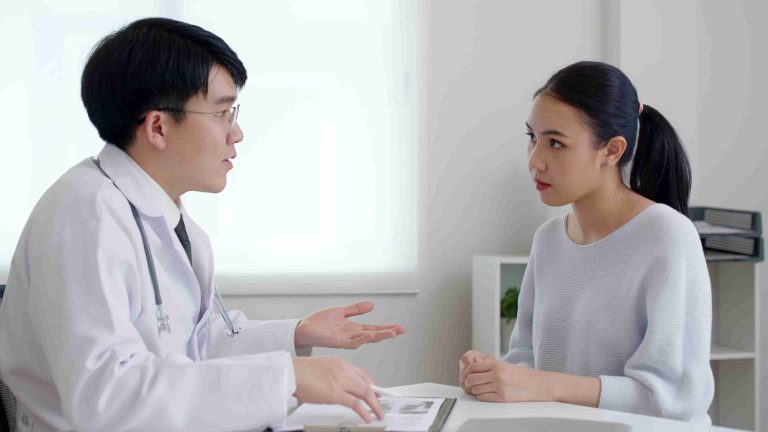Colon cancer is one of the most preventable forms of cancer, yet it remains a leading cause of cancer-related deaths around the world. One powerful tool in the fight against this disease is the colonoscopy, a screening procedure that not only detects early signs of cancer but also removes precancerous polyps before they turn into something more dangerous.
Despite the proven benefits, many people delay or avoid getting a colonoscopy due to fear, misinformation, or concerns about discomfort. Understanding how this procedure works and why it is so effective can help more individuals take advantage of its life-saving potential.
What Is a Colonoscopy?
A colonoscopy is a medical procedure used to examine the inside of the large intestine (colon and rectum). During the procedure, a doctor uses a long, flexible tube equipped with a tiny camera to view the colon’s lining and check for any abnormalities.
The colonoscopy allows doctors to look for inflammation, ulcers, tumors, and most importantly, polyps. Polyps are small growths on the colon lining that can develop into cancer over time if left untreated.
The procedure is typically done under mild sedation to ensure comfort. It generally takes 30 to 60 minutes and is performed in outpatient settings, meaning patients can return home the same day.
Why Colonoscopy Saves Lives
Colonoscopy is considered the gold standard for colorectal cancer screening because it can both detect and prevent cancer. This dual benefit sets it apart from many other cancer screening methods.
The most significant advantage is the ability to remove polyps during the procedure. If a polyp is found, it can often be removed right then and there using small instruments passed through the colonoscope. This prevents the polyp from potentially turning into cancer later on.
In cases where early-stage cancer is detected, colonoscopy provides the opportunity for timely intervention, which significantly improves treatment outcomes and survival rates.
Research shows that regular colonoscopy screening can reduce the risk of dying from colorectal cancer by up to 68 percent. That’s a powerful statistic and one that highlights the importance of this routine exam.
When and How Often to Get a Colonoscopy
The recommended age to begin colonoscopy screening has changed in recent years. For most people, screening now begins at age 45 instead of 50. This change reflects the growing number of colorectal cancer cases among younger adults.
People with higher risk factors may need to start even earlier. These risk factors include:
- A family history of colorectal cancer or polyps
- A personal history of inflammatory bowel disease, such as Crohn’s or ulcerative colitis
- A known genetic condition that increases cancer risk, like Lynch syndrome
If no polyps or cancer are found and the patient is considered average risk, a colonoscopy test is usually repeated every 10 years. If polyps are detected, your doctor may recommend screening more frequently, depending on the number, size, and type of polyps removed.
Colonoscopy vs Other Screening Methods
There are several options for colorectal cancer screening, including stool tests like FIT (fecal immunochemical test) and Cologuard, as well as imaging tests like CT colonography. While these tests are useful, they have limitations.
Stool tests can detect hidden blood or abnormal DNA in the stool, which may indicate cancer or large polyps. However, they do not allow for the immediate removal of polyps or provide direct visualization of the colon lining.
CT colonography provides images of the colon but requires the same preparation as a colonoscopy and cannot remove polyps if they are found. If a suspicious lesion is detected, a traditional colonoscopy will still be needed.
Colonoscopy remains the most comprehensive option because it allows for early detection, direct removal of polyps, and biopsy of abnormal tissue in a single procedure.
Preparing for the Procedure
One of the most talked-about parts of a colonoscopy is the preparation process, and it often causes unnecessary worry. Preparation is important because a clean colon allows for better visibility and more accurate results.
The day before the procedure, patients follow a clear liquid diet and take a special solution to clean out the colon. While the prep can be unpleasant, it is temporary and crucial for a successful exam.
In recent years, advancements have made the prep process more tolerable. Lower-volume options, flavored liquids, and split-dose regimens have improved patient comfort and compliance.
After the prep is complete, patients arrive at the medical facility, receive sedation, and undergo the colonoscopy with little or no discomfort. Most people remember little about the procedure itself.
Addressing Common Fears and Misconceptions
Many people delay getting a colonoscopy due to fear of pain, embarrassment, or finding something serious. These concerns are understandable but often based on misconceptions. The procedure is usually painless thanks to sedation. Patients are monitored closely throughout to ensure safety and comfort.
Concerns about embarrassment are common but should not be a barrier. Medical professionals who perform colonoscopies do so routinely and prioritize patient dignity and respect.
As for the fear of a cancer diagnosis, it’s important to remember that early detection often leads to a cure. Catching cancer early or removing polyps before they become cancerous is far better than waiting until symptoms appear.
Financial Considerations
Another concern for many patients is the cost of a colonoscopy. Fortunately, in many countries, colonoscopy is covered by insurance plans, especially when done for routine screening. If you are unsure about your coverage, contact your insurance provider or ask your healthcare team for a cost estimate.
Some facilities offer payment plans or financial assistance for patients without insurance. Delaying a colonoscopy due to cost may end up leading to more expensive treatment later if cancer develops and progresses.
The Impact of Colonoscopy on Public Health
The widespread use of colonoscopy screening has contributed to a decline in colorectal cancer rates in people over 50. Public awareness campaigns and changes in screening guidelines have helped more people take advantage of this preventive measure.
However, disparities remain. Access to colonoscopy can be limited by socioeconomic factors, lack of insurance, or limited availability in certain communities. Expanding access and encouraging regular screening across all populations is essential for continued progress.
Efforts to reach younger adults, who may not think they are at risk, are also important as colorectal cancer is increasingly being diagnosed in people under 50.
Conclusion
Colonoscopy is more than just a medical test. It is a powerful tool that saves lives by detecting and preventing colorectal cancer. Its ability to find and remove polyps during the same procedure makes it unique and highly effective.
By understanding how colonoscopy works, who needs it, and why it matters, more people can take control of their health and reduce their cancer risk. Don’t let fear, cost, or misinformation stop you from taking this important step.
If you are approaching the recommended screening age or have risk factors, talk to your healthcare provider. A single colonoscopy could be the reason you avoid cancer and live a longer, healthier life.







